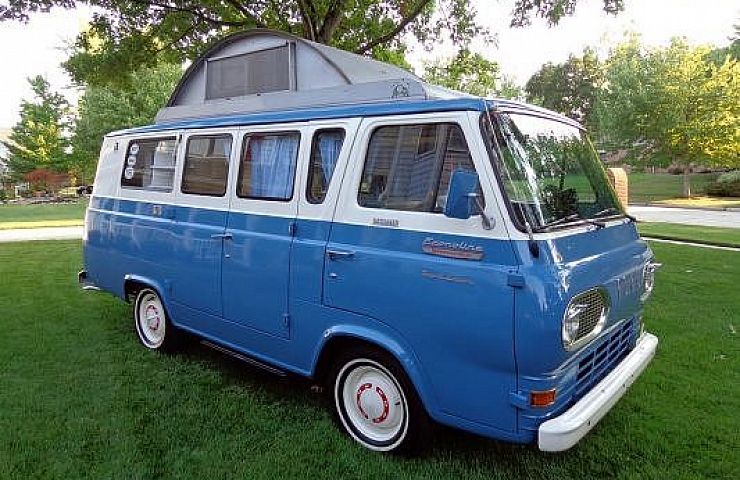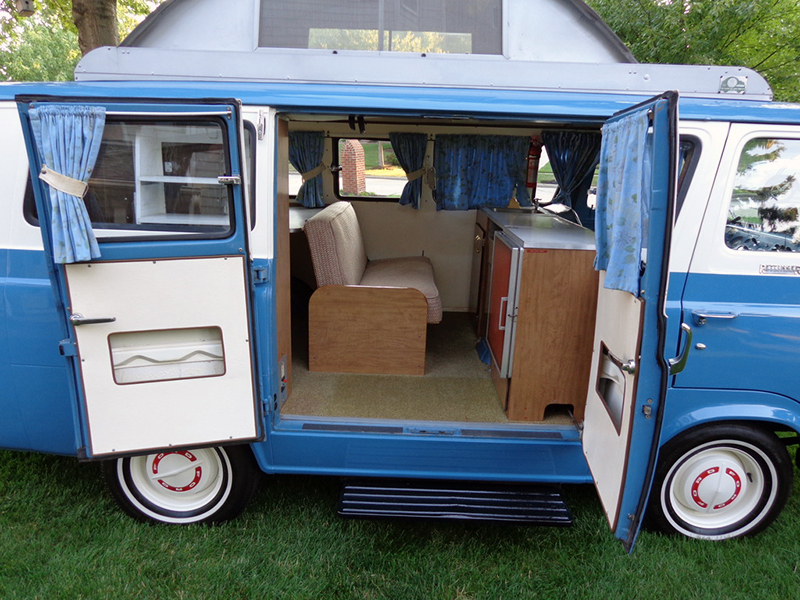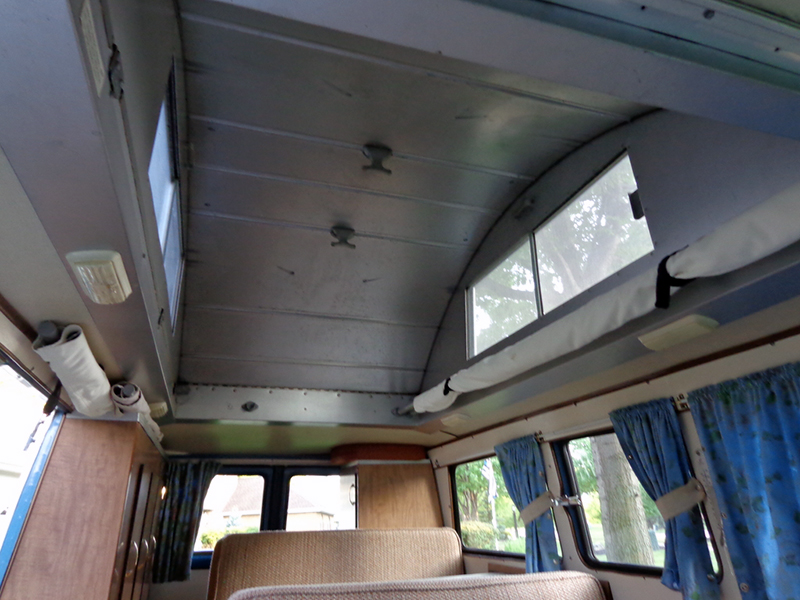If you’re not a fan of tent camping but don’t have the funds for a motorhome, there’s another option to consider: a full-size van with a pop-up camper.
In addition to potential savings up front, camper vans are lighter and more aerodynamic than fifth wheels and motor homes, making them more fuel efficient. And with a smaller footprint, they are also easier to park and garage when not in use. Besides, they are cool and custom.
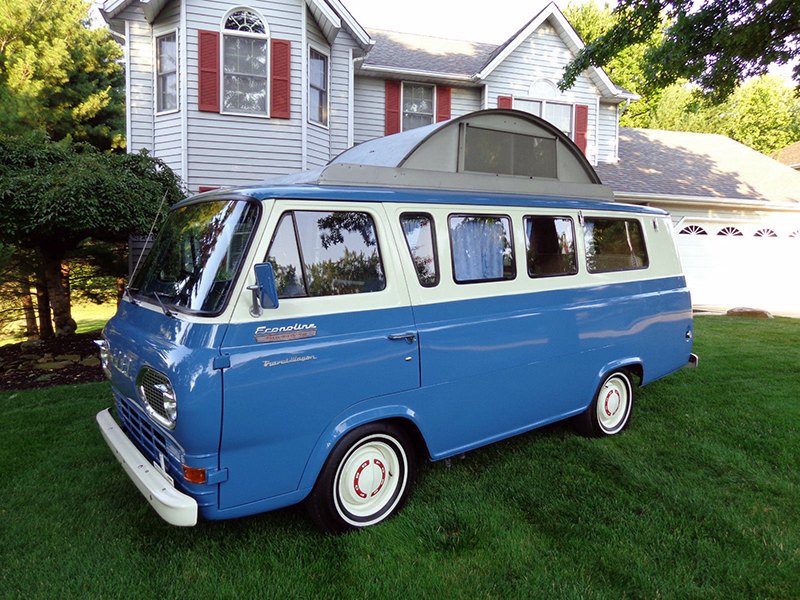
1966 Ford E-Series Econoline Van with a Turtle Top conversion
For example, this 1966 Ford E-Series Econoline Van with a camper conversion by Turtle Top shows how cool and practical these rigs can be. Turtle Top, a family business based in Goshen, Ind., got its start as a lighting company in 1934, but turned to converting cargo vans for rugged travel in 1962. The idea was to offer a low-maintenance way lift-able roof. This gorgeous rare example—with options for a full bed, Coleman stove, ice box and lots of cabinets—is still working on its first original 49,000 miles. Turtle Top continues to convert vans for various commercial purposes.
Another extraordinary example, this Econoline Super Van equipped with a Volkswagen pop-up camper was recently listed on eBay. The one-owner camper van powered by Ford’s bullet-proof 302 CI V8 engine and four-speed transmission also has a dealer-installed aftermarket air conditioning system and includes the original factory camping gear.
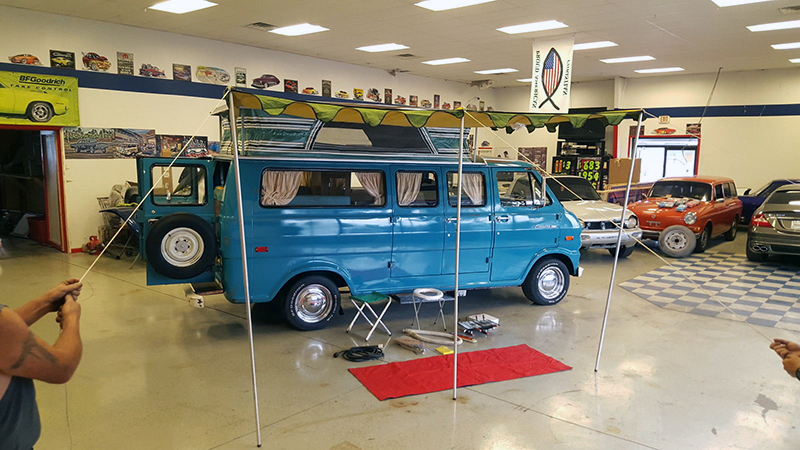
1970 Econoline with VW top
Of course, the grand daddy of pop-up campers with the most ready-to-buy options is the Volkswagen Westfalia: a joint venture between VW and Westfalia Werke that produced pop-up versions of Type 2 VW vans between the early 1950s and 2003. What says “Summer of Love” more than a splittie with an air mattress above the steering wheel?
As we reported last year, the VW camper tradition continues into the 21st century, as Volkswagen in 2015 released a new VW camper model for the European market.
If a brand new model captures your imagination, you might consider purchasing a full-size van and then having a company such as Sportsmobile do the conversion for you. Sportsmobile is the oldest company in the US specializing in conversions of Ford and Chevrolet full-size vans, as well as the Ford Transit Connect, Mercedes-Benz Sprinter, and Dodge ProMaster vans. Check out one of the early Sportsmobile sales brochures.
The company, founded in 1961, has offices in Texas, Indiana, and Northern California to serve customers throughout the United States. Buyers can choose between low or high roofs, and a variety of floor plans that can include small bathrooms. The camper top doesn’t accommodate a large bed, but can hold two people. A Sportsmobile conversion, which costs upwards of $8,000 on top of the van itself, takes about six to 10 months to build.
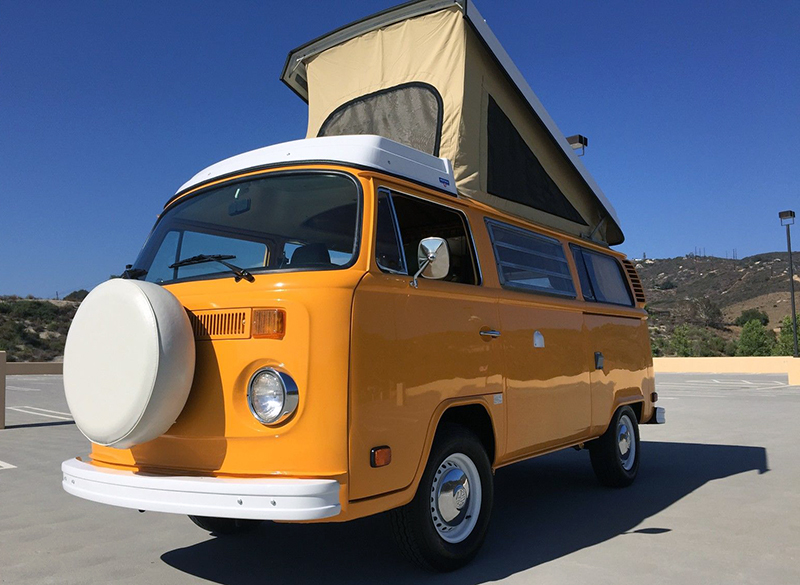
The grand daddy of pop-up campers is the Volkswagen Westfalia.
If you’re ready to spend that kind of money, GTRV and Colorado Camper Van also do conversions—and there’s even a Colorado kit for electronic camper-top lifts like this one on eBay. That could come in handy if you try doing the conversion yourself. We found one ambitious conversion project described on Instructables.com.
No matter how you locate or create your dream pop-up camper, the result provides a compact package for easy interstate mobility and comfortable camping. Once the investment of money and/or time is made, it leaves nothing but open highway ahead and a single perpetual question: Where to now?

